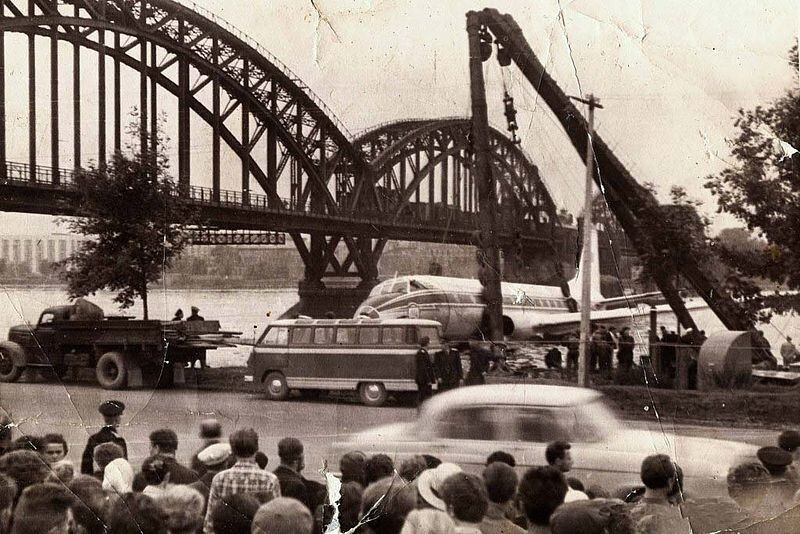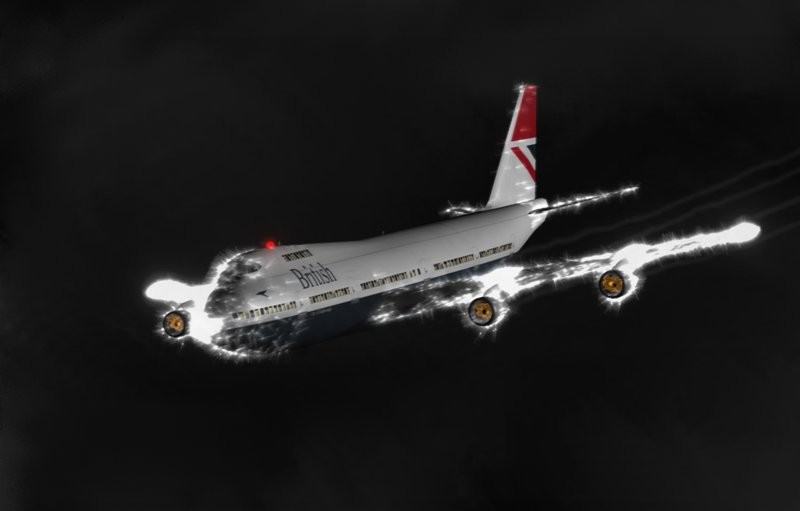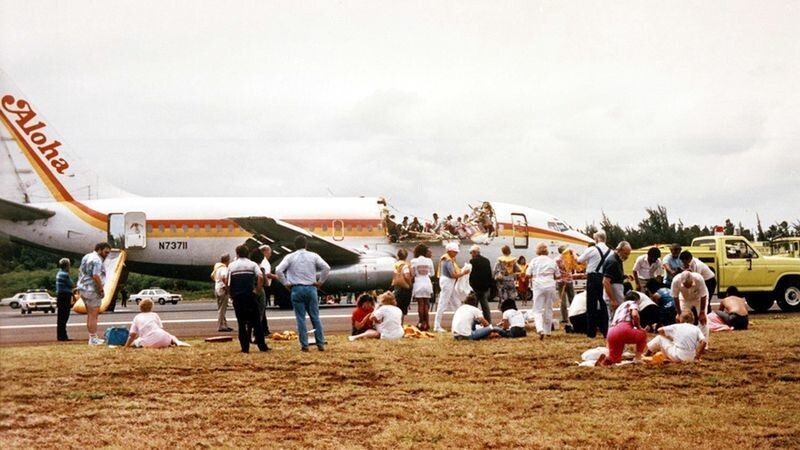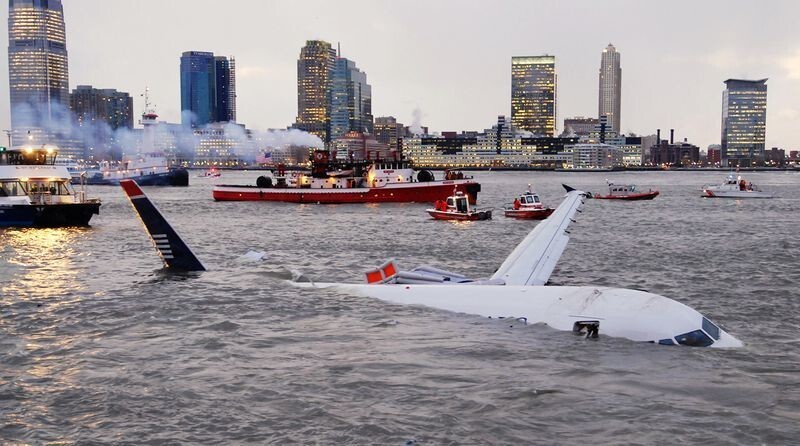5 Extreme Aircraft Landings in the History of Civil Aviation (6 photos)
When God gave everyone on board a second chance. 
1963 Tu-124 landing on the Neva
On August 21, 1963, the Tu-124 passenger airliner made flight Tallinn - Moscow. Almost immediately after takeoff, it turned out that the bow landing gear jammed in not fully retracted position. Flight it was impossible to continue, in connection with which it was necessary to turn to an emergency landing "on the belly" in Pulkovo - all the emergency services were already waiting there. The situation was complicated by the fact that the plane had to cut circles over city to minimize the risk of an explosion during landing.
Fuel still does not end, when suddenly - the left engine. Then the situation becomes critical and the liner is allowed fly directly to Pulkovo at a critically low altitude. Then, flying almost above St. Isaac's Cathedral, the right engine also stopped. Liner begins to glide from a height of 500 meters, losing altitude and the only the possibility of not crashing into residential areas remains to land on Neva. Even on the wide expanse of the sea, this is not an easy task, no longer talking about the river. Especially in the city, where this river is completely crossed by bridges.
Young but virtuoso pilots did it truly masterfully: the front desk was immediately torn off, and the plane touched the Neva tail, slightly dived under the water and swam forward, losing speed. All 45 passengers and 6 crew members were evacuated before the aircraft filled with water and sank. 
1982 Boeing 747 hit by a volcanic eruption
On June 24, 1982, an airliner hit a cloud over the island of Java. volcanic ash from the sudden eruption of the Galunggung volcano, in as a result of which all four engines of the aircraft failed. Now the plane could only glide, losing altitude. The co-pilot was able to calculate that enough time to get to the nearest airport in Jakarta. For this it was necessary overcome a mountain range with a height of about 3500 meters, but since the plane gradually decreased - the situation became critical.
An unprecedented statement by the ship's commander addressed to passengers at that moment went down in history: “Ladies and gentlemen,” he said. - We had a small problem: all four engines stopped. We are doing our best to launch them. Hope it doesn't deliver you have too much anxiety."
In the end, the pilot and flight engineer managed to gradually bring all 4 engines to life, which allowed at the last moment gain the necessary height to overcome the mountain range and land plane (albeit almost blindly due to particles of volcanic ash, adhering to the glass). None of the 248 and 15 crew members were injured. 
1988 How the Boeing "blew off the roof"
April 28, 1988, 23 minutes after takeoff, Boeing 737, following the route Hilo - Honolulu, tore off 35 sq.m. plating fuselage above the first six rows of the business class cabin and the cabin door pilots. All this happened at an altitude of 8 thousand meters, as a result of which pilots and passengers experienced explosive decompression. And the passengers business class were out in the open at a temperature of minus 45 degrees and the speed of the oncoming air flow is about 500 km/ h. Incredibly, the pilots managed to land the plane, but one person nevertheless died - the senior flight attendant, who at the time of the accident thrown overboard by the air current. Filmed in the USA in 1990 feature film "Hard Landing" based on this plane crash. 
year 2009. Landing on the Hudson
January 15, 2009, a minute and a half after takeoff began fall plane taking off from New York's LaGuardi Airport. IN as a result of a collision with a flock of birds at the airliner, both engine. The pilots managed to turn the liner, taking off to the north, to south, glide over the Hudson River without hitting the George Washington Bridge, and splash down the liner in front of Manhattan 48th Street without destroying heavy fueled aircraft.
Finally, he stopped in front of 42nd Street. In total, the aircraft has been in the air since takeoff for about 7 minutes.
After splashdown, the plane remained on the surface of the water, and passengers through both emergency exits went to both planes of the wing. All passengers on board were rescued. The motive for the incident was filmed "Miracle on the Hudson". 
2019e. A flock of seagulls and a cornfield
On the morning of August 15, 2019, the Airbus A321 of the Ural airlines" flew to Simferopol. There were 226 passengers on board. among which there were many children who flew with their parents to the sea. On takeoff, a whole flock of seagulls got into the engines of the aircraft, as a result of which first one failed, and then the second motor. The situation turned out critical, because the plane did not have time to gain altitude, so about any returning to the airport runway was out of the question. At the same time, the aircraft was refueled to failure, so the emergency the landing was extremely risky: with any push or spark, the fuel could detonate and an explosion would occur.
There was no time for reflection: Commander Damir Yusupov chose the most flat field and sent the plane there. The decision was as true as possible, because the body of the aircraft could not strike sparks on plowed land, in connection with which the fire and explosion were avoided. Because of the fact that the landing gear was not released, the plane was simply gliding along corn. The very next day, by decree of the President of the Russian Federation, Damir Yusupov and co-pilot Georgy Murzin was awarded the title of Hero of the Russian Federation.
The film based on this story, In the Sun, Along the Corn Rows, was the top box office this past weekend. 
Did you have situations on board when your heart went to your heels?





















